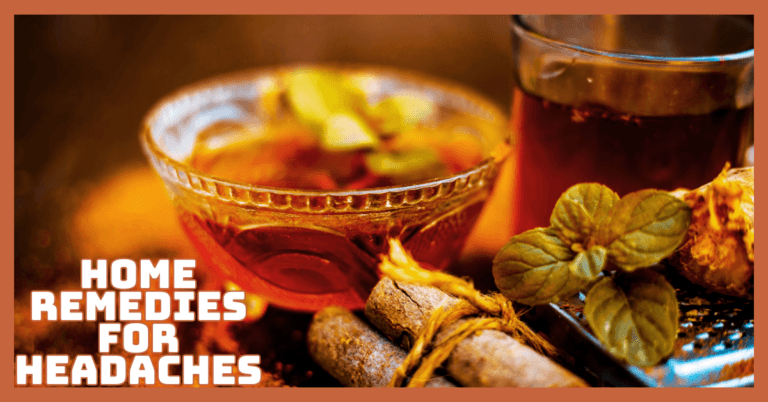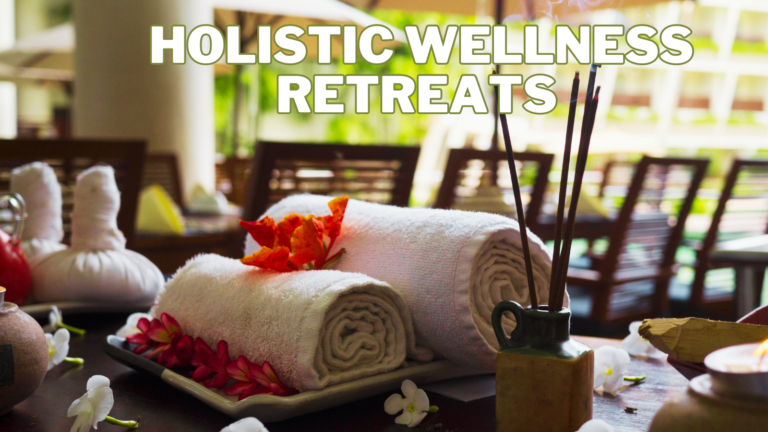Blossoms Of Wellness: Embracing Flowers For Healing
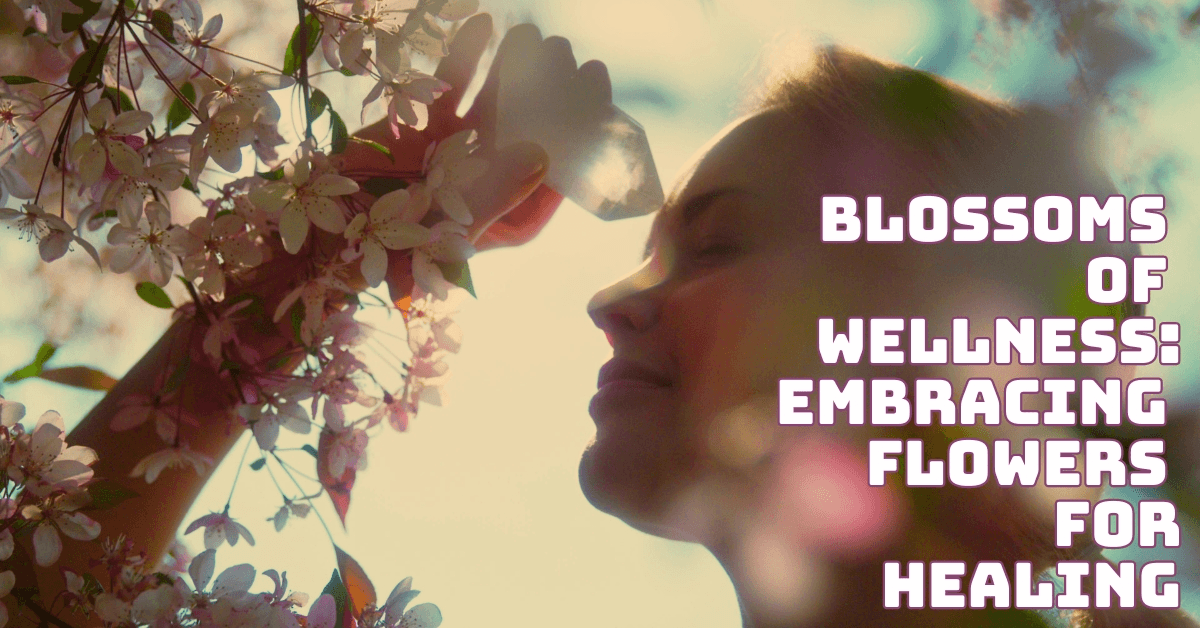
Blossoms Of Wellness: Embracing Flowers For Healing
The natural healing properties of flowers have drawn the interest of many people looking for harmony and balance in their lives in a world where holistic well-being is becoming increasingly important.
Blossoms of Wellness: Embracing Flowers for Healing delves into the profound impact that flowers can have on our mental, emotional, and physical health.
For centuries, various cultures have harnessed the therapeutic properties of flowers through practices such as aromatherapy, floral essences, and even the simple act of surrounding oneself with nature's vibrant blooms.
From the calming scent of lavender to the mood-boosting presence of sunflowers, each flower holds unique benefits that can enhance our well-being.
This article explores the science behind floral healing, shares practical tips for incorporating flowers into daily routines, and highlights inspiring stories of personal transformation through floral therapy.
Join us as we uncover the enchanting world of flowers and learn how these delicate yet powerful blossoms can contribute to a healthier, happier life.
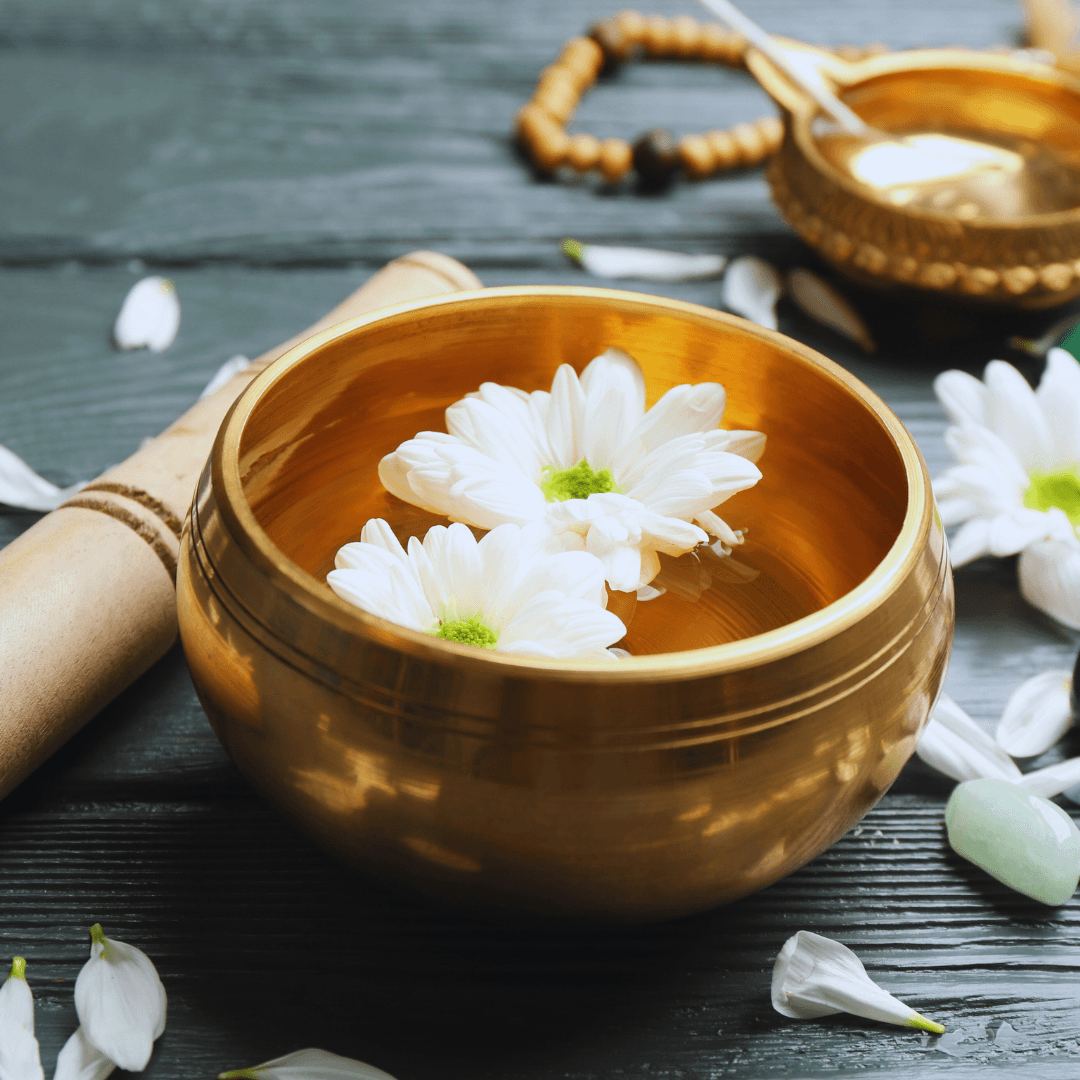
Historical Significance Of Flowers For Healing
1. Ancient Civilizations And Botanical Medicine
Flowers have been pivotal in health practices from ancient Egypt to traditional Chinese medicine.
The Egyptians used flowers for healing, like chamomile and lotus, in their herbal remedies, believing in their ability to cure ailments and provide spiritual protection.
Ancient Greeks and Romans also valued flowers for their medicinal properties, incorporating them into their daily lives. Hippocrates, the father of medicine, often prescribed herbal infusions that included flowers.
2. Ayurvedic Medicine
In India, the holistic practice of Ayurveda has utilized flowers for thousands of years. Flowers like hibiscus and lotus are commonly used in Ayurvedic treatments.
Hibiscus, for instance, is known for its cooling characteristics and is often used to treat fevers and inflammation.
The lotus flower, symbolizing purity and enlightenment, is used in various treatments for its calming and balancing effects on the body and mind.
3. Traditional Chinese Medicine (TCM)
Traditional Chinese Medicine (TCM) has a profound and intricate history of using flowers for their healing properties, deeply rooted in the philosophy of acquiring balance and harmony within the body.
Chrysanthemum tea is a popular remedy for reducing fever and detoxifying the liver. TCM practitioners believe that flowers possess unique energies that can assist in restoring harmony and balance within the body, addressing both physical and emotional ailments.
The Science Behind Floral Healing
The science behind floral healing reveals that flowers positively impact mental, emotional, and physical health through their aromatic, visual, and biochemical properties.
Applying flower-derived essential oils, or aromatherapy, is a thoroughly researched field. Essential oils that influence the limbic system, the brain's emotional center, such as lavender and rose, have been demonstrated to lower anxiety and elevate mood. Studies indicate that inhaling these scents can decrease cortisol levels, reducing stress.
Visual exposure to flowers also contributes to well-being. Research from Rutgers University found that flowers trigger positive emotions and increase feelings of life satisfaction.
The presence of flowers has been shown to elevate mood, enhance social interactions, and even improve memory retention in older adults.
Biochemically, many flowers contain compounds that offer health benefits. For instance, chamomile is rich in antioxidants and has anti-inflammatory properties, effectively soothing digestive issues and promoting relaxation.
Echinacea, used for its immune-boosting effects, contains active substances that enhance the immune system and reduce inflammation.
A 2015 study published in the Journal of Physiological Anthropology demonstrated that interaction with plants, including flowers, can lower blood pressure, improve concentration, and reduce symptoms of depression.
These findings underscore the multifaceted benefits of flowers, validating their traditional uses and highlighting their potential in modern therapeutic practices.
Common Flowers For Healing
Healing flowers offer a range of benefits, each with unique properties that address specific health concerns. Here are some prominent examples:
1. Lavender
Lavender is renowned for its calming effects. Aromatherapy uses a lot of its essential oil to help people relax, feel less anxious, and get better sleep.
Studies on the effects of lavender on blood pressure and pulse rate have made it a popular choice for stress treatment.
2. Chamomile
Chamomile is celebrated for its soothing properties. Its flowers, often used in teas, contain antioxidants and anti-inflammatory compounds that help ease digestive issues, reduce menstrual pain, and promote relaxation. Chamomile's mild sedative effects make it a natural remedy for insomnia and anxiety.
3. Roses
Roses are not only symbols of love but also powerful healers. Rose oil and rose water are used for their emotional healing properties, helping to alleviate stress, depression, and grief.
Roses have also been shown to have anti-inflammatory and antioxidant effects, benefiting the skin by reducing redness and promoting a healthy complexion.
4. Echinacea
Echinacea is well-known for its immune-boosting properties. It is commonly used to prevent and treat colds and flu.
The flower's active compounds enhance the immune system, reduce inflammation, and have been found to shorten the duration of respiratory infections.
5. Calendula
Calendula or marigold is prized for its skin-healing properties. Due to its antibacterial, antiviral, and anti-inflammatory effects, calendula is used in creams and ointments to treat wounds, burns, and rashes.
6. Jasmine
Jasmine flowers are known for their intoxicating fragrance and calming and uplifting effect. Jasmine oil is used to reduce anxiety, boost mood, and even enhance libido. Its soothing scent can also improve sleep quality and promote feelings of well-being.
7. Peppermint
While often associated with its leaves, peppermint flowers also have healing properties. Peppermint's aromatic compounds, which have antispasmodic properties, can relieve headaches, improve mental clarity, and reduce symptoms of irritable bowel syndrome (IBS).
8. Passionflower
Passionflower is celebrated for its calming effects on the nervous system. It is used to treat anxiety, insomnia, and nervous restlessness.
Passionflower extracts increase gamma-aminobutyric acid (GABA) levels in the brain, promoting relaxation and reducing stress.
These flowers exemplify the diverse therapeutic potential found in nature's blossoms, each contributing to holistic health and well-being.

Methods Of Using Flowers For Healing
1. Aromatherapy
Benefits Of Aromatherapy
Stress Relief
Essential oils like lavender, chamomile, and ylang-ylang are renowned for their calming effects. They influence the limbic system, the part of the brain that controls emotions, thus reducing anxiety and promoting relaxation.
Improved Sleep
Oils like lavender and valerian create a calming atmosphere that improves sleep quality. Their soothing properties help calm the mind and body, making falling and staying asleep easier.
Enhanced Mood
Citrus oils like orange and lemon can uplift mood and boost energy levels. These oils stimulate serotonin production, a hormone associated with happiness and well-being.
Pain Relief
Peppermint and eucalyptus oils have analgesic properties that help alleviate headaches and muscle pain. They act as natural painkillers by reducing inflammation and soothing tense muscles.
How To Use Aromatherapy
Diffusion
Use an essential oil diffuser to spread the oils throughout the air. This method allows you to inhale the therapeutic scents throughout the day or night, creating a calming atmosphere in your living space.
Inhalation
Add a few drops of essential oil to a bowl of boiling water. Take a deep intake of the steam while you tilt yourself over the bowl and wrap a towel around your head. This technique works very well for respiratory problems and rapidly calming the mind.
Topical Application
Essential oils should be diluted with a carrier oil (such as coconut or jojoba oil) before being used topically. This method is excellent for localized relief, such as massaging peppermint oil onto the temples to relieve a headache or using eucalyptus oil to soothe sore muscles.
Bath
Add a few drops of essential oil to the water to relax your bath. This technique combines the advantages of topical treatment and inhalation.
The steam carries the oil’s scent while the skin absorbs its properties, providing overall relaxation and relief.
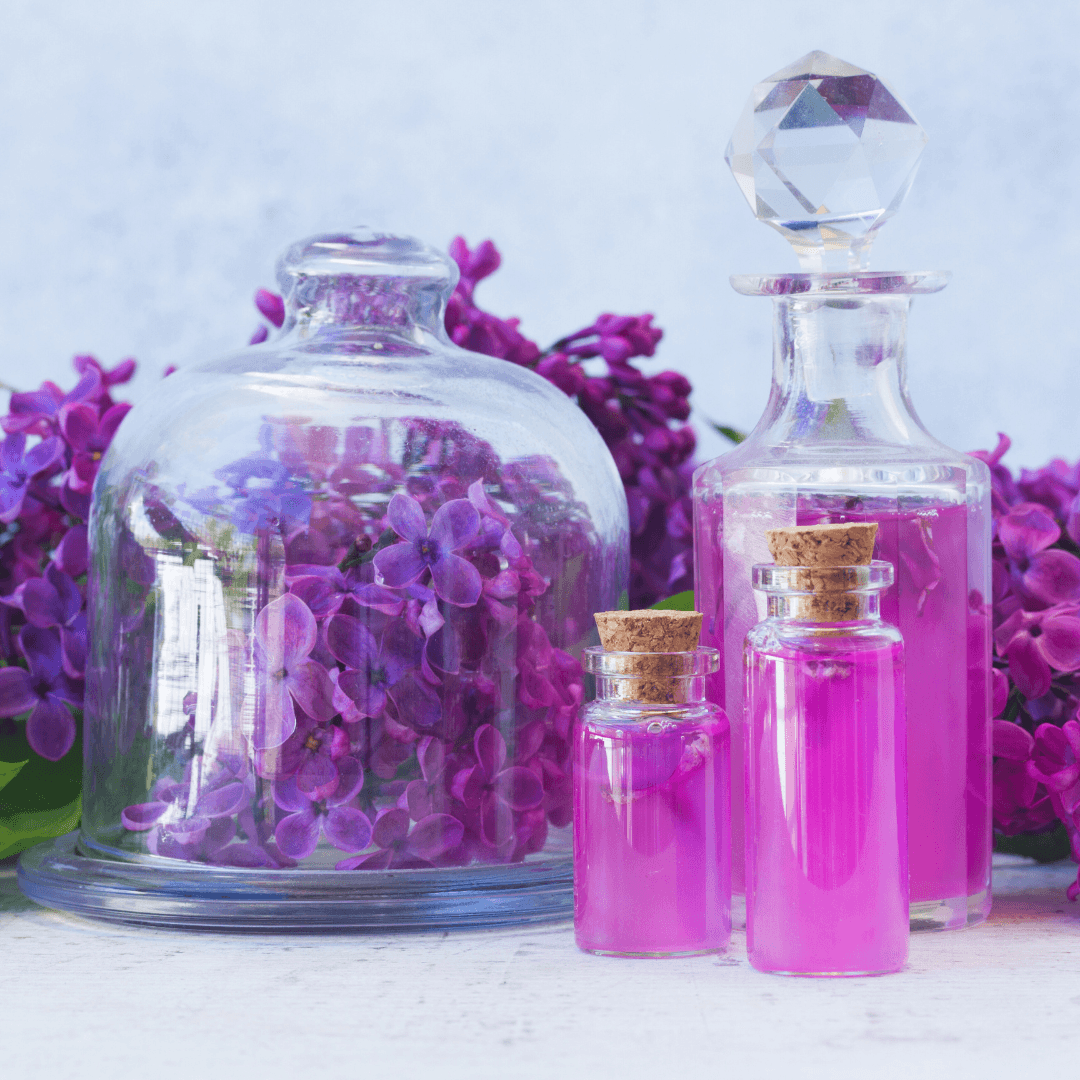
2. Floral Essences: What They Are And How They Work
What They Are
Floral essences are liquid extracts made from the flowering parts of plants. They are designed to address emotional and psychological well-being rather than physical ailments.
Unlike essential oils, floral essences do not have a strong scent as they are prepared through a different process, often involving solar infusion.
These essences capture the vibrational energy of the flowers and are commonly taken internally or used topically.
How They Work
Emotional Healing
Floral essences work energetically, promoting emotional balance and mental clarity. They are believed to interact with the body's subtle energy fields, helping to alleviate negative emotions and mental states.
For instance, Bach Flower Remedies, developed by Dr. Edward Bach in the 1930s, are a popular form of floral essences.
Each remedy targets specific emotional conditions like fear, uncertainty, and loneliness. For example, Rescue Remedy, a blend of five different Bach flowers, is widely used to manage acute stress and anxiety.
Application
Floral essences are versatile and easy to use. Usually, you take them under the tongue or add a few drops to a glass of water.
This internal use allows the essence to interact quickly with the body's energy system, promoting emotional healing and balance.
Additionally, floral essences can be added to bath water, enhancing a bath's relaxing and calming effects.
They can also be sprayed in a room or around the body to create a soothing environment, helping reduce stress and promote peace.

3. Herbal Teas And Tinctures: Recipes And Benefits
Herbal Teas
Chamomile Tea
Chamomile tea is cherished for its calming effects on the mind and body. Ingredients like apigenin, which attaches to brain receptors to induce calm and lessen anxiety, are included.
Additionally promoting better digestion, chamomile tea eases indigestion and calms the stomach. It is widely used to encourage sound sleep due to its gentle, calming qualities.
To make tea, a cup of boiling water should be steeped with one or two teaspoons of dried chamomile flowers for five to ten minutes. Lemon or honey are optional flavouring additions.
Peppermint Tea
The taste and health advantages of peppermint tea are well known. Its menthol relaxes the muscles in the head and neck to help relieve headaches.
Peppermint tea also helps digestion by soothing the gastrointestinal system and lessening symptoms like gas and bloating.
One or two tablespoons of dried peppermint leaves should be steeped in a cup of boiling water for five to ten minutes to make peppermint tea. It can be consumed cold or warm, with or without sugar.
Rose Tea
Rose tea offers a delicate floral flavour with potential health benefits. It contains antioxidants and vitamins that support skin health and may help reduce stress and anxiety.
Rose tea is also hydrating and can promote a glowing complexion. Place one or two tablespoons of dried rose petals into a cup of boiling water and let steep for five to ten minutes to make rose tea. Add a dash of rose water or honey for added flavour and benefits.
Tinctures
Echinacea Tincture
Echinacea tincture is valued for its immune-boosting properties. Alkamides and polysaccharides, found in echinacea flowers, are potent substances that strengthen the immune system's defence against illnesses like the flu and colds.
To make echinacea tincture, fill a jar with echinacea flowers, cover it with alcohol (such as vodka), seal it tightly, and store it in a dark place for 4-6 weeks.
After steeping, strain the liquid and store it in a dark bottle. Take a small amount daily during cold and flu season to support immune health.
Lavender Tincture
Lavender tincture is prized for its calming effects on the nervous system. It contains aromatic compounds like linalool and linalyl acetate, which promote relaxation and reduce anxiety.
Lavender tincture can alleviate stress, improve sleep quality, and soothe nervous tension. To prepare a lavender tincture, fill a jar with lavender flowers, cover it with alcohol (such as vodka), seal it tightly, and store it in a dark place for 4-6 weeks.
After the steeping period, strain the liquid and store it in a dark bottle. Take a small amount as needed to experience its calming benefits.
These herbal teas and tinctures offer natural remedies that taste delicious and provide therapeutic benefits for various health concerns.
You can improve your natural health regimen and support overall well-being by including them in your daily practice.
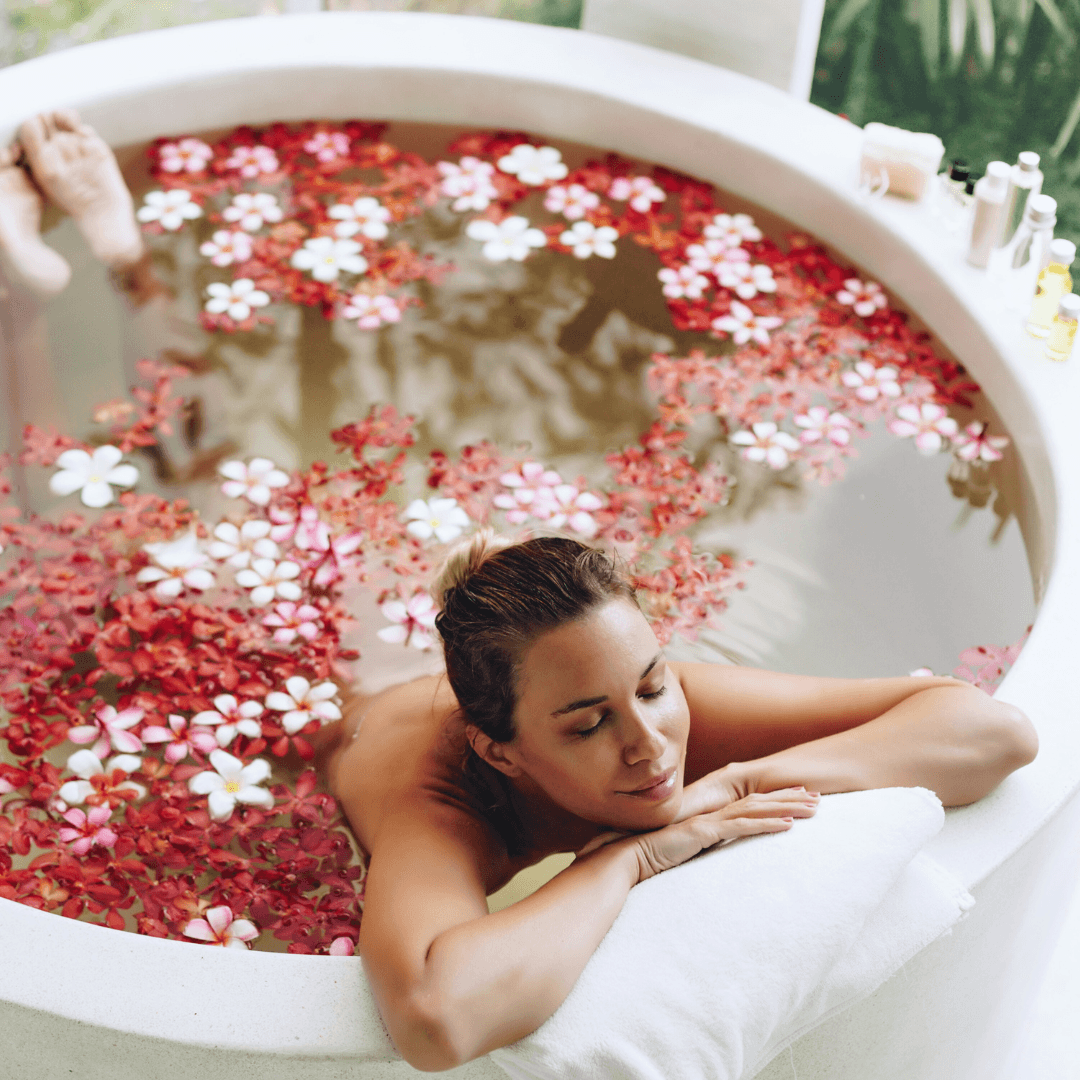
4. Flower Baths And Skincare: DIY Ideas And Benefits
Chamomile Bath
Adding dried chamomile flowers and essential oil to your bathwater offers a soothing experience for the skin and muscles.
Chamomile, well-known for its anti-inflammatory and relaxing qualities, can effectively relieve muscle strain and skin irritations.
The warm water releases the aromatic compounds of chamomile, promoting relaxation and reducing stress levels. This bath is particularly beneficial for encouraging a peaceful night's sleep before bedtime.
Jasmine Bath
Fresh jasmine flowers and essential oil add a romantic and uplifting touch to your bath. Jasmine is prized for its intoxicating fragrance and skin-nourishing properties.
Its perfume boosts the spirit and eases anxiety while aiding in the hydration and softness of the skin.
A jasmine bath can enhance self-care rituals, providing a luxurious and indulgent experience that promotes physical and emotional well-being.
Peppermint Foot Soak
A peppermint foot soak is refreshing and rejuvenating, perfect for tired and achy feet. Peppermint leaves contain menthol, which has a cooling effect and aids in the relief of pain and inflammation.
Soaking your feet in warm water infused with peppermint leaves revitalizes circulation, refreshes the skin, and provides a natural deodorizing effect.
This simple yet effective treatment is ideal after a long day or as part of a regular self-care routine.
Echinacea Cream
Infusing dried echinacea flowers in olive oil creates a potent base for a skin-nourishing cream. Echinacea is known for its immune-boosting properties and ability to reduce inflammation.
Blended with beeswax, the resulting cream creates a barrier of defence for the skin, boosting immunity and relieving sensitive skin disorders like eczema or small burns. Regular application of echinacea cream promotes overall skin health and resilience.
Jasmine Face Mist
A jasmine face spray provides skin with moisture and lifts, making it a great pick-me-up during the day.
Jasmine flowers simmered in distilled water release their aromatic compounds, which have moisturizing and toning effects on the skin.
Spritzing jasmine face mist refreshes the complexion, leaving it radiant and revitalized. Jasmine is a great addition to your skincare routine, especially during tension or exhaustion, because its calming smell helps relieve stress and anxiety.
Incorporating these flower baths and skincare treatments into your routine nurtures your skin and enhances overall well-being.
They provide natural, aromatic experiences that promote relaxation, rejuvenation, and emotional balance, turning self-care into a soothing and enjoyable practice.
Conclusion
The therapeutic use of flowers spans centuries and cultures, offering profound benefits for physical and emotional well-being.
From ancient traditions to modern practices, flowers have been valued for their healing properties, whether through aromatherapy, herbal teas, floral essences, or skincare rituals.
Each method harnesses flowers' unique compounds and energies to promote relaxation, reduce stress, and enhance overall vitality.
Moreover, flowers' versatility allows for creative and personalized approaches to wellness, catering to individual needs and preferences.
Flowers offer gentle yet effective solutions that align with natural healing principles, whether seeking to alleviate physical ailments or support mental clarity.
Our journey toward optimum health and wellness is enriched as we explore and incorporate these botanical jewels into our lives, strengthening our bond with the natural world and ourselves.
I trust you enjoyed this Blossoms Of Wellness: Embracing Flowers For Healing article. Please stay tuned for more blog posts soon. Take care!
JeannetteZ
>>>Please click here to read my all-inclusive article about A Comprehensive Guide To Healing Naturally<<<
>>>Are you interested in Natural Healing through Herbs? Please click here for my #1 Recommendation<<<
Your Opinion Is Important To Me
Do you have thoughts, ideas, or questions? I would love to hear from you. Please leave me your questions, experiences, and remarks about this article, Blossoms Of Wellness: Embracing Flowers For Healing, in the comments section below. You can also email me at Jeannette@Close-To-Nature.org.
Disclosure
This post may contain affiliate links. As an Amazon Associate and other affiliate programs, I earn from qualifying purchases at no extra cost to you. Please read my full affiliate disclosure.
You might also enjoy these blog posts:
Ultimate Guide To Companion Plants For Garlic
The Beginner's Feijoa Growing Guide
Best Ways To Grow Jackfruit From Seeds: A Step-By-Step Guide
A Closer Look At The Fascinating Species Of Hyenas


